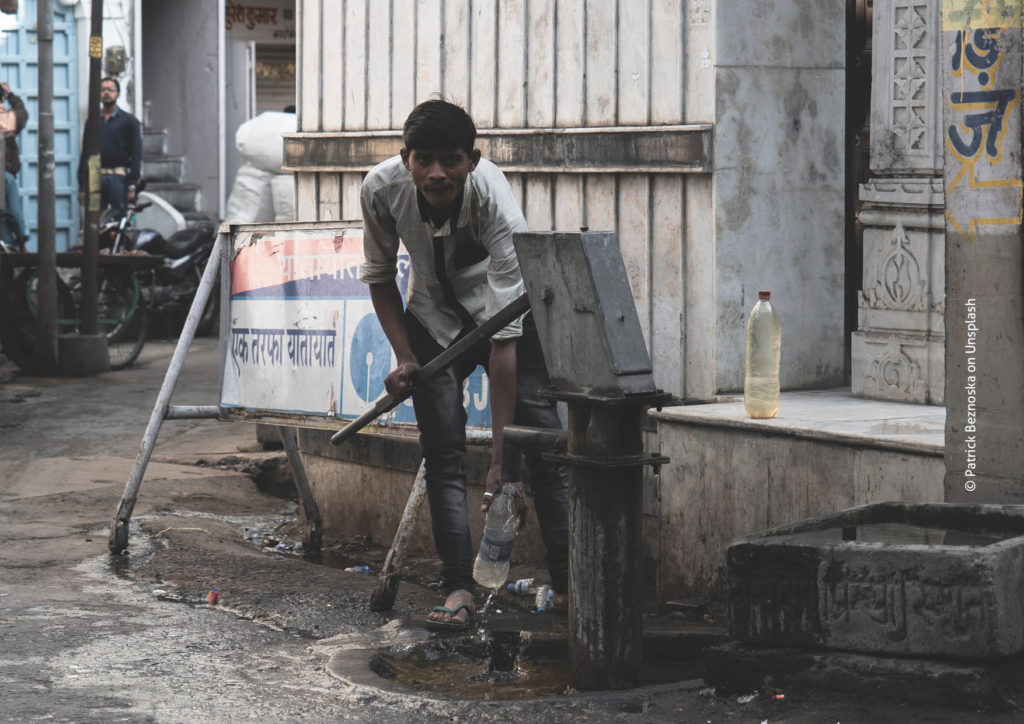Waterborne Democracy for Rural India: Empowering Communities Through Water Management
Water is the lifeblood of rural India, where agriculture dominates and access to clean, reliable water sources determines the livelihoods of millions. However, rural communities often face severe water scarcity, poor infrastructure, and mismanagement of resources. The idea of “Waterborne Democracy” proposes a participatory, community-driven approach to water management that can empower rural India. By decentralizing control, engaging local stakeholders, and ensuring sustainable practices, Waterborne Democracy can address the water challenges faced by rural regions while strengthening democratic governance at the grassroots level.
The Water Crisis in Rural India
India is home to nearly 17% of the world’s population but has only 4% of its freshwater resources. Rural areas, which are largely dependent on agriculture, face acute water shortages due to several factors, including:
- Over-reliance on groundwater: More than 80% of rural India relies on groundwater for drinking and irrigation, but over-extraction has led to depletion of aquifers.
- Climate change: Erratic rainfall patterns and droughts exacerbate water scarcity, making traditional water sources unreliable.
- Pollution: Many rural water sources are contaminated by agricultural runoff, industrial waste, and improper sanitation, leading to health issues and reduced water availability.
- Poor infrastructure: Lack of effective water management infrastructure, including dams, canals, and pipelines, limits access to clean water for drinking, irrigation, and other uses.
Without sufficient water, farmers cannot cultivate crops, leading to economic hardships, food insecurity, and migration to urban areas in search of better opportunities. This makes addressing the water crisis in rural India not just a matter of environmental sustainability, but also of social justice and economic development.
Waterborne Democracy: A New Approach to Water Management
Waterborne Democracy is a concept that aims to place water management in the hands of local communities, empowering them to make decisions that best suit their unique needs and challenges. This approach shifts from top-down, bureaucratic water governance to a more inclusive, decentralized model where rural citizens actively participate in the decision-making process.
Key principles of Waterborne Democracy include:
- Community participation: Local communities, including farmers, women, and marginalized groups, play an active role in managing water resources, from planning and implementation to maintenance and monitoring.
- Decentralization: Water management authority is shifted from centralized government agencies to local bodies, such as panchayats, village councils, and water user associations (WUAs).
- Sustainability: Emphasis on the sustainable use of water resources, including rainwater harvesting, groundwater recharge, and the conservation of traditional water systems like tanks, ponds, and wells.
- Transparency and accountability: Decision-making processes are transparent, with mechanisms for holding local leaders and institutions accountable to the community.
- Equity in access: Ensuring that all members of the community, especially women and marginalized groups, have equal access to water resources.
Case Studies: Waterborne Democracy in Action
There are several examples from across India where community-driven water management has been successfully implemented, showcasing the power of Waterborne Democracy.
1. Hiware Bazar, Maharashtra
Hiware Bazar, a village in the drought-prone Ahmednagar district of Maharashtra, was transformed through the collective efforts of its residents. Under the leadership of local sarpanch Popatrao Pawar, the village adopted water conservation practices, including rainwater harvesting, watershed management, and afforestation. Through active community participation and the revival of traditional water bodies, Hiware Bazar went from being water-scarce to water-sufficient, boosting agricultural productivity and improving livelihoods.
2. Ralegan Siddhi, Maharashtra
Another successful example of Waterborne Democracy is Ralegan Siddhi, where social activist Anna Hazare led a grassroots movement to address the village’s water scarcity. By implementing watershed development techniques and involving the entire community in decision-making, the village transformed its water management practices. Today, Ralegan Siddhi is a model of sustainable water management and rural development, with increased agricultural output and improved socio-economic conditions.
3. Tarun Bharat Sangh, Rajasthan
In Rajasthan, a state known for its arid climate, the organization Tarun Bharat Sangh, led by Rajendra Singh (often called the “Waterman of India”), has revived traditional water harvesting systems called johads. Through community mobilization and local participation, hundreds of dried-up rivers and streams have been rejuvenated, replenishing groundwater levels and bringing water back to villages. This movement has empowered local communities to take control of their water resources and combat desertification.
The Role of Panchayats and Water User Associations
Panchayati Raj institutions (village councils) and Water User Associations (WUAs) are key players in the implementation of Waterborne Democracy. These local governance bodies can be empowered to manage water resources more effectively by:
- Facilitating community engagement: Panchayats can organize community meetings, where villagers discuss water issues, share knowledge, and collectively decide on solutions.
- Implementing local water projects: Panchayats and WUAs can take charge of water conservation projects, such as building check dams, ponds, or rainwater harvesting systems.
- Monitoring and maintaining water resources: Local bodies are better positioned to ensure that water systems are properly maintained, water usage is equitable, and resources are not over-exploited.
By leveraging the existing structure of panchayats and WUAs, Waterborne Democracy can become an integral part of India’s rural governance system.
Challenges to Waterborne Democracy
While the idea of Waterborne Democracy holds great promise, there are several challenges that must be addressed to ensure its success:
- Lack of awareness: In many rural areas, people may lack awareness about sustainable water practices or the importance of community-driven water management. Education and awareness campaigns are critical.
- Inadequate funding: Rural communities often struggle with limited financial resources to implement water projects. Government support, in the form of grants and subsidies, is necessary to bridge this gap.
- Political interference: In some cases, local politics can hinder the effective functioning of panchayats or WUAs, with vested interests controlling water resources for personal gain.
- Climate variability: As climate change accelerates, rural communities will need to adopt more resilient water management practices to cope with erratic rainfall patterns and increasing droughts.
Conclusion: A Path Forward for Rural India
Waterborne Democracy offers a viable path forward for addressing the water crisis in rural India. By placing control in the hands of local communities, it promotes sustainable water use, empowers rural citizens, and strengthens democratic governance. As rural India continues to face the twin challenges of water scarcity and climate change, community-driven water management will be critical to ensuring long-term water security and rural development.
To make Waterborne Democracy a widespread reality, both government and civil society must work together to support and expand grassroots water initiatives. By empowering rural communities to take control of their water resources, India can move towards a more sustainable and equitable future, where water is not just a resource, but a shared responsibility for all.
For more insights on rural development and community-driven solutions, visit ITSparkMedia.


